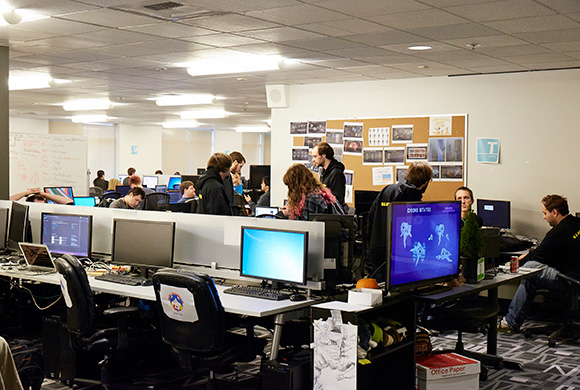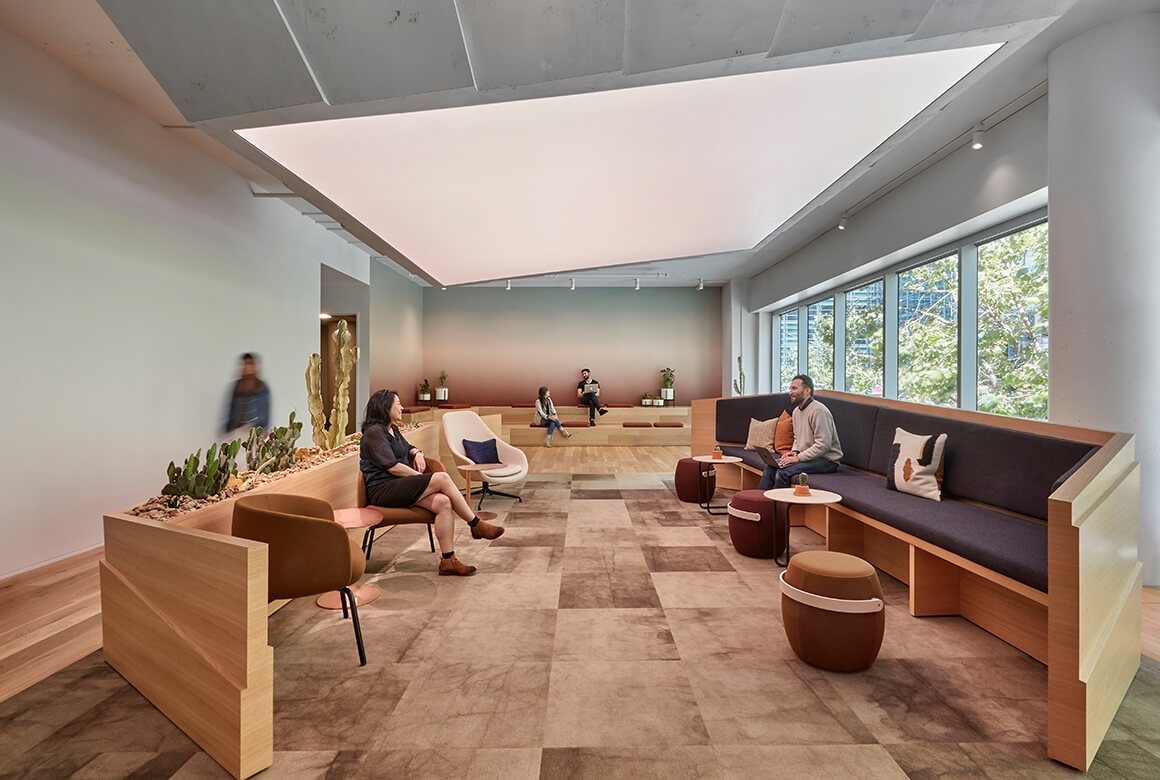Workplace
May. 9, 2016

Creators from Redmond dominate the American game industry
A university that acts as a hub in the game industry, developing people who can be active in the field.
[DigiPen Institute of Technology] Redmond, Washington, USA
In the Seattle, Washington suburb of Redmond is a university that has produced a string of talented creators in the video game industry. Called the DigiPen Institute of Technology, it is a unique university specializing in video game development.
DigiPen was born in 1988. It wasn’t a university at first, but a Canadian simulation and engineering company. Company founder Claude Comair remembers the early days.
“At the time, television stations commissioned us to create animated logos; it was a very happy time,” he says. “It was a time when it cost US$5,000 to $6,000 to create one second of animation. Soon thereafter, I realized that we could develop our own technology for software that could create 3D images in games.”
Mr. Comair immediately contacted Minoru Arakawa, at the time president of Nintendo of America, the US subsidiary of Nintendo. Those early talks led to a joint venture between DigiPen and Nintendo of America called DigiNin, which worked on the development of a 3D engine for the Nintendo64. DigiNin later became Nintendo Software Technology, which Mr. Comair and Mr. Arakawa continued to lead for many years, and which made a huge mark in the video game industry.
In 1993, Mr. Comair established educational programs in British Columbia, Canada. This was the predecessor of DigiPenInstitute of Technology. “At first, this started as a two-year university in Canada,” Mr. Comair says. “About 80 percent of the students were Americans. But Americans can’t work in Canada—they can’t even enter an internship in a Canadian company. We gave them an education, but I felt that there was a limit to [what they could do in] the Canadian market. We also ran up against the problem of Canada’s Ministry of Education not really understanding us, and that it would be impossible to provide students with a four-year university degree.” So DigiPen relocated to the United States, in the city of Redmond at the invitation of Nintendo of America.
Within 20 miles of the DigiPen campus in suburban Redmond are more than 350 game studios; many DigiPen graduates are working in famous game companies including Microsoft, Nintendo, Bungie, Blizzard Entertainment and Valve Corporation. So DigiPen is really attracting attention as a hub of the gaming industry.

Exterior of the Redmond campus.
Founded: 1998
Students: 1,072 (978 undergraduate, 85 graduate students)
https://www.digipen.edu

Claude Comair, founder of DigiPen
When people ask Mr. Comair what makes DigiPen’s education so unique, his response is that it is based in the curriculum, created on a very simple philosophy – “The thinking during our curriculum’s development was, what kind of engineering is needed to create the product known as a game?” Mr. Comair says. “In other words, engineering is not first, but our goal is to be thinking about the product as the goal and on how to develop that end product.” DigiPen isn’t like a traditional university. “We’re not trying to nurture good people just for the sake of it; we want to train good engineers,” Mr. Comair says. “Of course, it goes without saying that to be a good engineer, a person has to be honest, humble and sociable.” After enrollment, students in the first year learn about specializing in the technology needed to develop their specific projects. Then the second and third year, all the way to graduation, it’s the same thing – iterating on the development experience.
DigiPen not only educates game programmers, but also game audio composers, game designers, computer engineers, computer scientists, producers and artists. The focus of every program is to provide students with foundational skills and the technical knowledge to produce modern technology and simulations and to give them the real-world experience of applying those to team projects.
As an example, over the first two years from the time an artist enters the school, they will complete some 200,000 drawings. The arts curriculum draws on an original way of thinking where it is simply practice that is needed to link the thinking in the brain to the movement of the fingertips. Also, the school takes int consideration the collaborations that will happen in the real world, by bringing together mixed teams from different degree programs to work together on long-term projects like animated films and video games.
It’s also a must when talking about DigiPen to look at the idea of imitating the real world. This means creating things that will actually sell. In fact, DigiPen students have exhibited their work in famous game festivals around the world, and have received awards in the professional category. “Things made in projects at the university don’t need to be inferior to products in the real world,” says Mr. Comair. This kind of philosophy means that students continue to challenge themselves by making things that can be used in the real world in their day-to-day work.
Of course, there is also strong support for the students on the university side as well. The faculty/student ratio is one to twelve. All of the teachers are people with a very high level of experience and specialized knowledge. By careful observation of DigiPen projects, and to isolate the fine details of them, the approach is to look seriously at everything one by one, meaning that a large number of highly specialized teachers are needed. Also, while students are divided into groups of about 15 people, depending on the project for the year, each group is assigned a mentor who will very carefully observe not only the students’ progress but also their health and mental state. Thanks to this kind of support, students can push forward with their challenging projects.
Many of the graduates who have experienced this kind of student life are now very active and successful in society—and there is some interesting data that shows this plainly. This is in the student loan default rate. In the US, rather than parents funding college, most students study with the help of government loans, but the delayed repayment of these loans has become a major social problem. According to a May 8, 2015 article in the Financial Times of the UK, the 2011 default rate for those who should be repaying student loans is 13.7 percent. For DigiPen, this is only 1.3 percent. It’s clear that people who function independently in society are being educated, even though there isn’t much well-understood data.
“Our mission is to properly prepare students for their upcoming life,” Mr. Comair says. “Some people might criticize us and compare us, saying we only care about the employment of our students, but it’s impossible for them to find employment if they aren’t prepared for life. Is it OK to not care about employment? At DigiPen we teach the things that will be useful for society not just what students want to study. Here it’s completely different.”
When DigiPen first came to Redmond, there were only nine game-related companies in all of Washington State. Today there are more than 350, and, as described earlier, DigiPen graduates are active in many of these. One evaluation of DigiPen, which has such an overwhelming presence in the game industry, is that on August 27, 2010, the date when DigiPen’s newest Redmond campus opened, the Mayor of Redmond designated it as “DigiPen Day.” DigiPen has been a significant contributor to the local economy, and it has definitely become a company beloved by the citizens of Redmond.
Consultancy for Work Style: In-house
Interior Design: JPC Architects
Web exclusive content
Interviews at the DigiPen campas, October 9, 2015

Cafeteria used by students and teachers. The focus on the meals prepared is high enough for it to compare favorably with US state universities.

The sound lab. Students studying game music work on a project.

Job postings. There are many companies looking for DigiPen graduates. Top creators—who also serve as scouts—give lectures weekly at the university. Students hone their technology from an early stage through internships.









